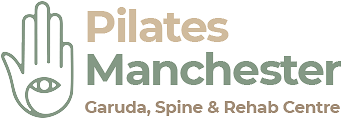How a one to one Pilates apparatus programme can benefit Hip and Knee Replacement patients
- In general, 9 out of 10 people experience dramatic pain relief after a replacement but living with an artificial knees and hips poses new challenges. Pilates apparatus can help build stability around the joint when guided by apparatus trained professionals.
- Some people going in for surgery expect that they will be able to use their new artificial joint just like a natural one but without all the pain. Although full range of movement may not be restored, a rehabilitation Pilates apparatus program focusing on the surrounding tissues of the knee or hip will be extremely helpful.
- After working with several clients both before and after a replacement I can see that getting used to a new joint takes time and a whole new approach to movement. I have seen amazing results from clients here determination to return to daily life activities.
- Pilates apparatus is the ultimate rehabilitation workout for these clients. Prior to surgery they lived with pain for many years, sometimes even decades.
- This pain created compensation strategies in their bodies that won’t be fixed by simply replacing the joint. Even though the pain is gone now, the body is still used to moving as if it were protecting the painful area. We look at other areas such as shoulders, back and ankles, have they compensated along the way?
- Plus the limited range of motion in the joint as well as the “unnatural” sensation experienced by some of the post-replacement population makes regular daily activities as well as traditional exercise more challenging and sometimes even dangerous. This can be dramatically improved for both hip and knee replacements by looking at time under tension, reps, sets , tempo and loads.
- Pilates apparatus offers just the right approach to rebuild balanced movement patterns in the body as well as maximize the benefits of the artificial joint. All our staff are highly trained and adapt to the individual.
For example a research study in 2007 showed: “With the introduction of minimally invasive techniques and the pressure of insurance regulations, postoperative rehabilitation has been placed on an accelerated track. As surgeons turn to more aggressive postoperative protocols and early entry into outpatient therapies, we introduce a pre- and postoperative program involving the Pilates method. Renewed patient interest in the use of Pilates for postoperative rehabilitation has led to the development of safe and modified exercises for patients undergoing total hip or knee arthroplasty”. (Levine B1, Kaplanek B, Scafura D, Jaffe WL)
How Yoga can benefit Hip / Knee Replacement
- Proper exercise after surgery can reduce stiffness and increase flexibility and muscle strength, so yoga is a good thing for this condition. But how much and how soon are dependent on many factors such as physical health before the surgery and presence of chronic conditions that may affect the speed of healing.
- In the past this surgery was reserved mostly for older patients, as artificial hips didn’t last as long as they do now, and having a repeat hip/knee replacement is possible but not desirable. But as technology has improved, so has the number of years the prosthetic parts can be relied upon to serve their purpose.
- So now it is more common to see hip/knee replacements in younger people, who may be in better overall physical condition and who will heal faster.
For example a research study paper published in 2017 reported evidence highlights the positive effects of yoga for people with a range of physical and psychological health conditions. A recent non‐Cochrane systematic review concluded that yoga can be used as self‐administered practice in stroke rehabilitation. Cochrane Database Syst Rev. 2017 Dec; 2017(12): CD011483.
- The hip/knee joint is one of the largest joints in the human body and is what is known as a “ball and socket joint”. In a healthy hip/knee joint, the bones are connected to each other with bands of tissue known as ligaments. These ligaments are lubricated with fluid to reduce friction.
- Joints are also surrounded by a type of tissue called cartilage that is designed to help support the joints and prevent bones from rubbing against each other.
- The main purpose of the hip/knee joints is to support the upper body when a person is standing, walking and running, and to help with certain movements, such as bending and stretching.
